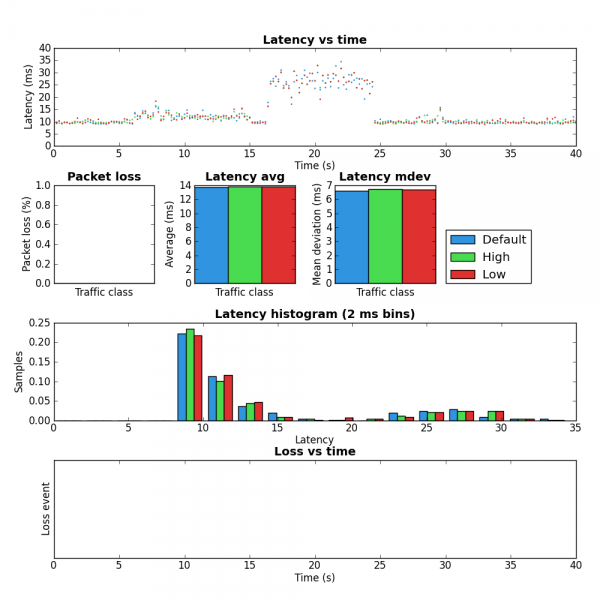My home router (Linux box) is configured to shape upstream traffic to just below the link rate to avoid Bufferbloat – this greatly improves interactive performance under load. Recently I’ve experimented with various packet sizes. The charts below show the effect of small packets.
- Between 0-6 seconds the link is idle.
- From 6-14 seconds the upstream link is flooded with 1,400 byte packets (10Mb/sec of traffic trying to get through a 6.2Mb link)
- At 17 seconds the upstream link is flooded with 64 byte packets (10Mb/sec as well)
Notice how much higher the latency and jitter are with small packets.
Confusingly, these results were gathered with the bandwidth shaper configured for 53 bytes of overhead [1] which is my current understanding of the per-packet overhead on VDSL2 [53 is a coincidence with the ATM cell size].
Per-packet overhead for VDSL2 (without ATM) and PPPoE:
- 5 Bytes for PTM
- 40 bytes for 802.3
- 8 bytes for PPPoE
Either the above overhead numbers or wrong or there is something else going on.
[1] – overhead argument to tc.
